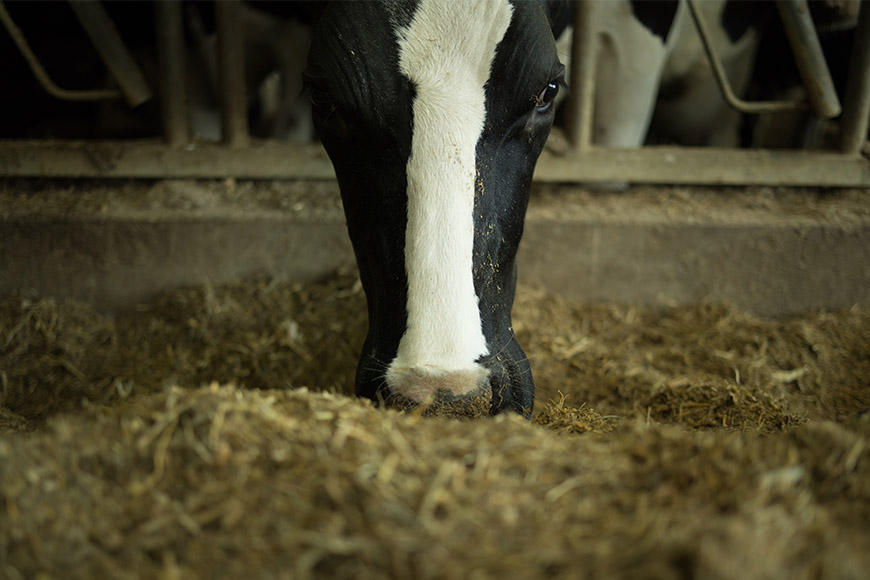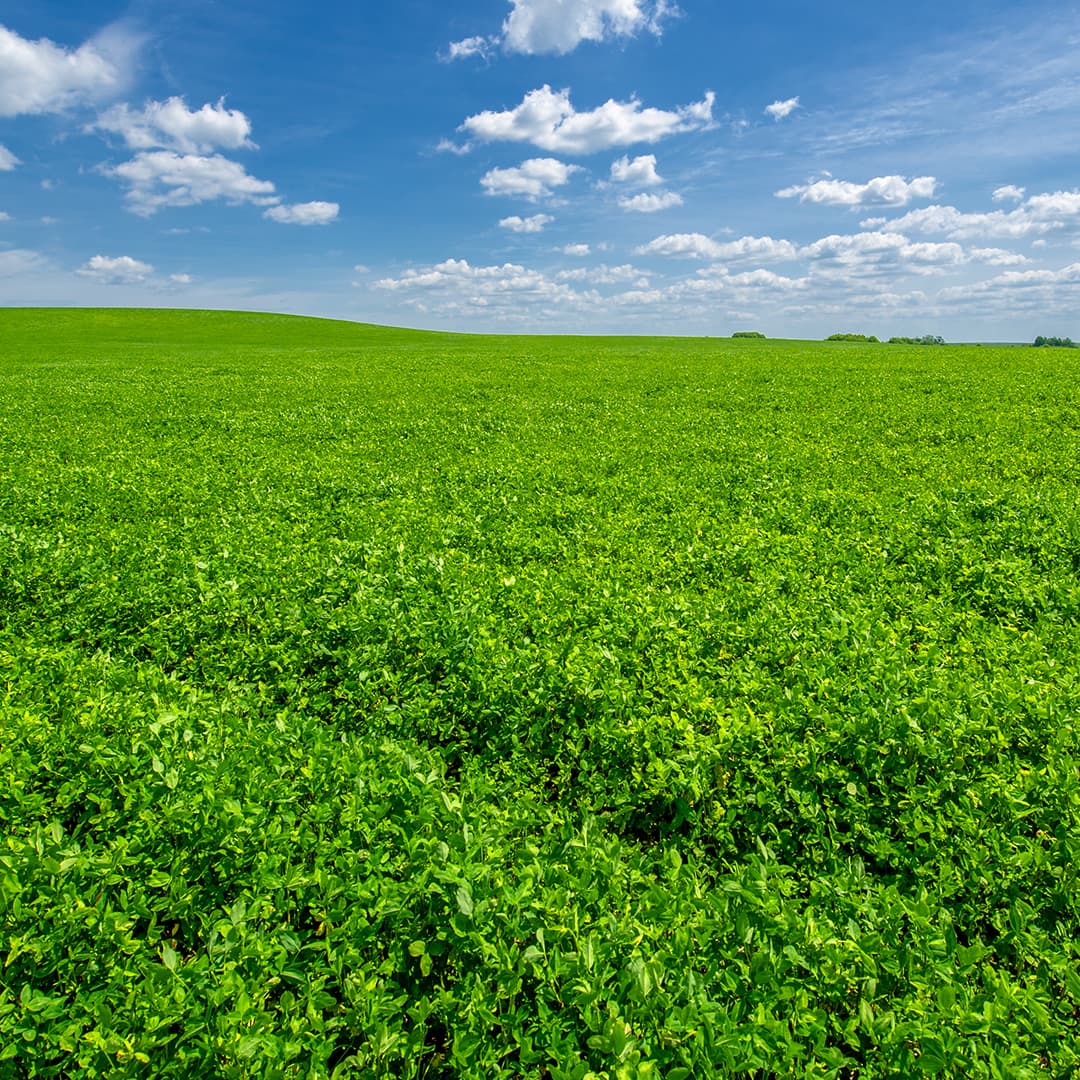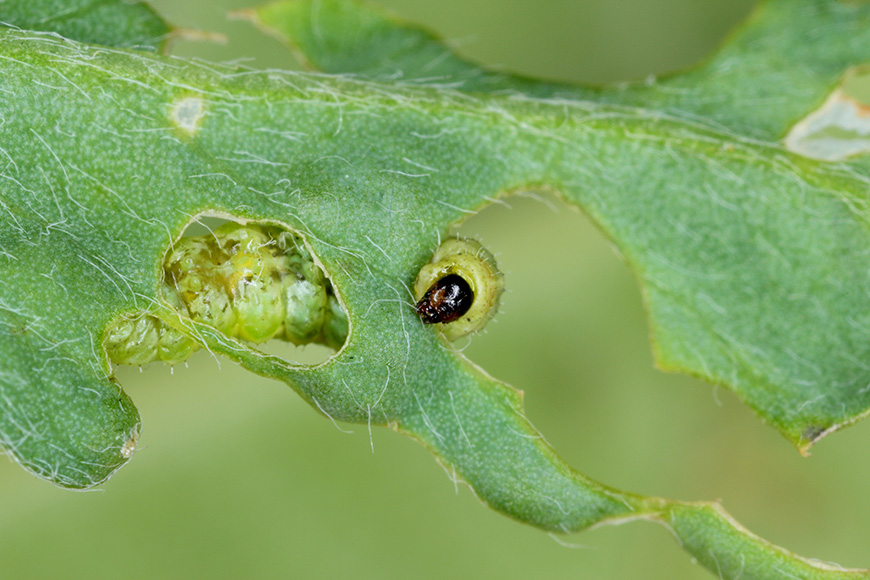Sometimes things don’t go according to your plans, including harvesting high-quality alfalfa. With new varieties of high-quality alfalfa coming onto the market, like HarvXtra® Alfalfa with Roundup Ready® Technology, there have been some questions in the industry about which tests can accurately determine alfalfa quality. Test accuracy is key to reducing alfalfa quality variation. Here are four ways to help deal with alfalfa when a harvest delay, or other factors, causes you to suspect its quality:
1. Use accurate testing
There is a lot of variation when it comes to alfalfa quality tests. From total digestible nutrients (TDN) to relative feed value (RFV) to relative forage quality (RFQ), each test is calculated from nutrient constituents predicted through a near-infrared (NIR) analysis and uses different calculations with different variables.
Not only are there a wide range of available tests, but results vary within the tests – especially when forage quality is unusually high or low, not average. If you look at the bar chart in Figure 1, the vertical bars represent a typical frequency distribution of a lab’s results for alfalfa hay quality tests. The light bars at the ends of the bell curve represent where alfalfa fiber quality is either unusually high or low. The analysis accuracy of these extremes is financially critical because knowing exactly where your alfalfa is quality wise will help determine what steps are needed to re-balance the diet.
![]()
For best results, test all forages with the most accurate NIR alfalfa quality test, one based on a sample set representing the widest range in forage quality, like the Calibrate® High Quality Forage Analysis. This will help ensure rations are adjusted accurately while aiming for the highest quality.
2. Determine the digestibility
Pinpointing the exact amount of digestible fiber in your alfalfa will help determine how much supplemental forage you will need to balance fiber in your rations for the coming year. For an accurate measurement, test for neutral detergent fiber (NDF) and neutral detergent fiber digestibility (NDFd), in conjunction with analysis for other essential nutrients.
Knowing the NDF and NDFd of alfalfa fed can help maintain intakes and reduce the chances for a drop in milk production. For example, when forage NDF digestibility is high, more can be included in the diet without creating excessive rumen fill, which can reduce intake. However, when forage NFD digestibility is low, inclusion levels in the diet should be reduced to avoid excessive rumen fill. This could increase feed cost if the byproduct feeds used to fill the resulting space in the diet are more costly than the alfalfa being replaced.
3. Consult with your nutritionist
It is likely that not all of your harvest schedule got off track due to Mother Nature. Utilize all the higher-quality alfalfa in high production rations in order to maintain growth and milk production.
Then, depending on the amount of alfalfa affected by a rain delayed harvest you have, there are a few different ways to work it into other rations. Work closely with your nutritionist to determine the best course of action for your farm. These forages can likely be used in older heifer, dry cow or low-production rations. Another option would be to sell it and purchase higher quality alfalfa to maintain high quality rations.
4. Adjust rations accordingly
If you decide incorporating lower quality alfalfa into your lactating herd’s ration is necessary, as noted previously, knowing the exact NDFd of the alfalfa will help better determine how much you can include in the diet without compromising intake and milk production. Work with your nutritionist to balance rations more frequently and make sure new ration formula are in place before the feed is fed. Also, alternations should be made as new feed analysis results become available.
Here are a few tips that could help you and your nutritionist re-balance a ration for acceptable nutrition when dealing with affected alfalfa:
But no matter what lemons Mother Nature throws your way, by determining the exact quality and NDFd of alfalfa with an accurate analysis as well as working closely with your nutritionist to make strategic ration adjustments, your 2018 alfalfa crop can provide a higher quality forage ration.
For more information, ask your local forage lab for a high-quality alfalfa analysis to help bring precision to your ration.
1. Use accurate testing
There is a lot of variation when it comes to alfalfa quality tests. From total digestible nutrients (TDN) to relative feed value (RFV) to relative forage quality (RFQ), each test is calculated from nutrient constituents predicted through a near-infrared (NIR) analysis and uses different calculations with different variables.
Not only are there a wide range of available tests, but results vary within the tests – especially when forage quality is unusually high or low, not average. If you look at the bar chart in Figure 1, the vertical bars represent a typical frequency distribution of a lab’s results for alfalfa hay quality tests. The light bars at the ends of the bell curve represent where alfalfa fiber quality is either unusually high or low. The analysis accuracy of these extremes is financially critical because knowing exactly where your alfalfa is quality wise will help determine what steps are needed to re-balance the diet.
For best results, test all forages with the most accurate NIR alfalfa quality test, one based on a sample set representing the widest range in forage quality, like the Calibrate® High Quality Forage Analysis. This will help ensure rations are adjusted accurately while aiming for the highest quality.
2. Determine the digestibility
Pinpointing the exact amount of digestible fiber in your alfalfa will help determine how much supplemental forage you will need to balance fiber in your rations for the coming year. For an accurate measurement, test for neutral detergent fiber (NDF) and neutral detergent fiber digestibility (NDFd), in conjunction with analysis for other essential nutrients.
Knowing the NDF and NDFd of alfalfa fed can help maintain intakes and reduce the chances for a drop in milk production. For example, when forage NDF digestibility is high, more can be included in the diet without creating excessive rumen fill, which can reduce intake. However, when forage NFD digestibility is low, inclusion levels in the diet should be reduced to avoid excessive rumen fill. This could increase feed cost if the byproduct feeds used to fill the resulting space in the diet are more costly than the alfalfa being replaced.
3. Consult with your nutritionist
It is likely that not all of your harvest schedule got off track due to Mother Nature. Utilize all the higher-quality alfalfa in high production rations in order to maintain growth and milk production.
Then, depending on the amount of alfalfa affected by a rain delayed harvest you have, there are a few different ways to work it into other rations. Work closely with your nutritionist to determine the best course of action for your farm. These forages can likely be used in older heifer, dry cow or low-production rations. Another option would be to sell it and purchase higher quality alfalfa to maintain high quality rations.
4. Adjust rations accordingly
If you decide incorporating lower quality alfalfa into your lactating herd’s ration is necessary, as noted previously, knowing the exact NDFd of the alfalfa will help better determine how much you can include in the diet without compromising intake and milk production. Work with your nutritionist to balance rations more frequently and make sure new ration formula are in place before the feed is fed. Also, alternations should be made as new feed analysis results become available.
Here are a few tips that could help you and your nutritionist re-balance a ration for acceptable nutrition when dealing with affected alfalfa:
- Reduce the amount of hay in your ration, or
- Reduce the total forage level in the diet and fill the resulting space with high-fiber supplements such as ear corn, soy hulls, whole cottonseed, brewer’s grains, corn gluten feed or beet pulp.
- Ensure that dietary metabolizable protein levels are not compromised, since lower quality alfalfa can also be low in protein.
- If total dry matter intake is still compromised, consider including some fat to increase the energy density of the diet.
But no matter what lemons Mother Nature throws your way, by determining the exact quality and NDFd of alfalfa with an accurate analysis as well as working closely with your nutritionist to make strategic ration adjustments, your 2018 alfalfa crop can provide a higher quality forage ration.
For more information, ask your local forage lab for a high-quality alfalfa analysis to help bring precision to your ration.



